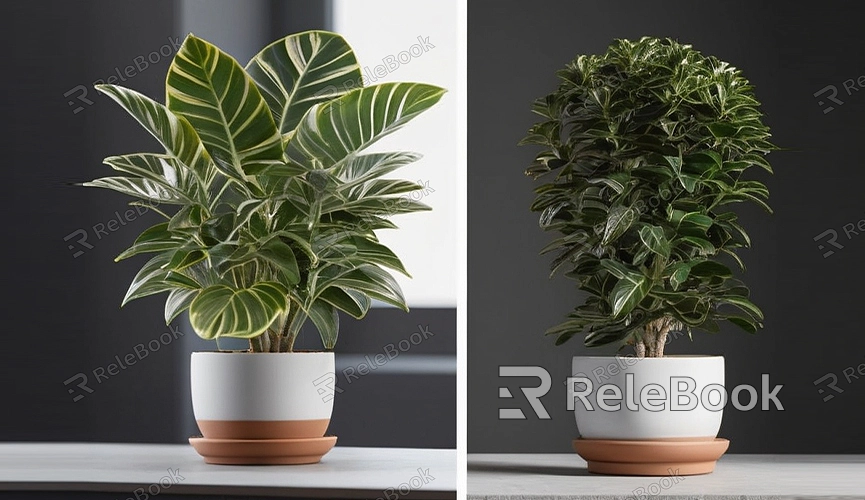Does 3D Modeling Require GPU?
In modern digital art and design, 3D modeling has become an essential tool, whether it's for game development, animation production, or product design. Many people may wonder, does 3D modeling require a GPU (Graphics Processing Unit) to achieve? This article will explore this question, helping you understand the role and necessity of GPUs in the 3D modeling process.
What is a GPU?
Before answering this question, let's first understand what a GPU is. A GPU, short for Graphics Processing Unit, is a processor specifically designed to handle graphics and image data. Unlike a CPU (Central Processing Unit), GPUs have a high degree of parallel processing capability, allowing them to process large amounts of graphics data quickly. Therefore, GPUs are crucial in applications requiring high computational power and rapid image processing.

The Role of GPU in 3D Modeling
1. Real-Time Rendering
Real-time rendering is a crucial aspect of the 3D modeling process. Real-time rendering refers to the computer's ability to update the display instantly as you manipulate the model. The advantage of GPU in this regard is evident because it can quickly process graphics data, providing a smooth user experience. Without robust GPU support, real-time rendering may become sluggish, affecting modeling efficiency and experience.
2. Handling Complex Models
When dealing with complex 3D models, especially those containing a large number of polygons and details, the parallel processing capability of GPUs significantly improves computational efficiency. A powerful GPU can accelerate the calculation and display of these complex models, allowing designers to create and modify more quickly.
3. Rendering Effects
After 3D modeling is complete, rendering is typically required to generate the final images or animations. Modern rendering engines, such as Blender's Cycles and Maya's Arnold, extensively utilize GPUs to accelerate the rendering process. GPU rendering not only speeds up the process but also provides high-quality rendering results in a shorter amount of time. Therefore, for efficient and high-quality rendering work, GPUs are indispensable.
Requirements in Different Scenarios
1. Beginners and Lightweight Projects
For beginners and users engaged in lightweight 3D modeling, having an ordinary GPU or integrated graphics card is usually sufficient. These users have simpler modeling needs, lower model complexity, and less demanding requirements for real-time and final rendering. Therefore, there is no need for exceptionally high-performance GPUs.
2. Professional Designers and Complex Projects
For professional 3D designers or users working on complex projects, high-performance GPUs are essential. These users typically need to handle high-polygon models, large-scale scenes, and high-quality rendering. Having a high-performance GPU not only improves work efficiency but also maintains a smooth operation experience in complex scenes, ensuring high-quality final rendering results.
3. Game Development and Animation Production
In game development and animation production, real-time rendering and high-quality rendering are crucial. Game developers need to continuously test and adjust models and scenes, while animators need to perform a considerable amount of rendering work. High-performance GPUs significantly improve work efficiency in these fields, reducing waiting time and allowing developers and producers to focus on creative work.
The Synergy of CPU and GPU
Although GPUs play a vital role in graphics processing and rendering, CPUs are equally important in the 3D modeling process. CPUs handle logical operations, simulation calculations, and other non-graphics-related tasks in modeling software. Therefore, when choosing hardware, a balanced configuration of CPU and GPU is essential. A combination of high-performance CPU and GPU can ensure smooth and efficient 3D modeling workflows.
In summary, whether 3D modeling requires a GPU depends on specific application scenarios and requirements. For lightweight projects and beginners, an ordinary GPU or integrated graphics card is sufficient. However, for professional designers, complex projects, game development, and animation production, high-performance GPUs are indispensable, significantly improving the smoothness of real-time rendering and the speed and quality of final rendering.
When choosing hardware, it is recommended to select a suitable CPU and GPU combination based on your actual needs and budget to ensure efficient and smooth 3D modeling work. If you have any questions or need further advice, feel free to leave a comment. If you need high-quality 3D textures, HDRI, or 3D model downloads while creating models and virtual scenes, you can download them from Relebook and import them directly into your models for use.

